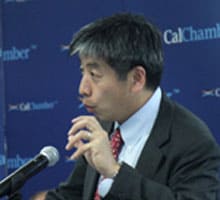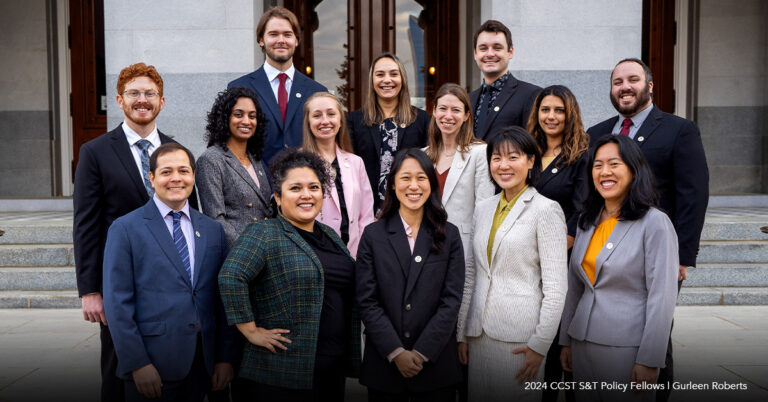Update: Applications for the CCST Science & Technology Policy Fellowship Have Closed
CCST Council Meeting: Taking a Closer Look at China
June 7, 2013 | CCST Newsroom | Contact: M. Daniel DeCillis

The June CCST Council meeting focused on the impact that China’s quest to become a global science, technology and innovation leader will have on California, and the global community as a whole.
The dinner speaker, Tai Ming Cheung, is the director of the Institute on Global Conflict and Cooperation (IGCC) at UC San Diego. IGCC studies a wide range of topics involving the security, environmental, and economic policies that shape our ability to prevent conflict and promote cooperation, including through nontraditional connections between and across disciplines and institutions. The Council dinner was paired with an international forum co-hosted by CCST and the California Chamber of Commerce.
“China has made some significant progress in its to become a world leader in science, technology and innovation within the next 10 to 20 years,” said Cheung. “They are investing heavily in bringing this vision to reality.”
Since 1995, China has boosted its spending on research and development from 0.6% of its GDP to 1.97% in 2012. A recently launched National Innovation Capability Building Program, which China unveiled in February, will revamp China’s national engineer center, build engineering key labs, and improve support for industrial technological innovation, among other strategies.
California has paid careful attention to China’s focus on science and technology innovation, forging corporate and institutional partnerships and connections at many levels. In April Governor Jerry Brown led a 90-person delegation of business leaders, agricultural producers, legal experts and bankers on a multi-city, densely packed tour of China; CCST Executive Director Susan Hackwood was part of the delegation. The official tour, organized by the Bay Area Council, was from April 8-15 and included stops in Beijing, Shanghai and Guangzhou.

Speakers at the CCST Council meeting addressed topics ranging from government perspectives on S&T and China to R&D partnerships with China, such as the US-China Clean Energy Research Center for Buildings Energy Efficiency (CERC-BEE). This partnership between the U.S. Department of Energy (based in the China Energy Group at Lawrence Berkeley National Laboratory) and China’s Ministry of Science and Technology uses both government and industry funding to focus on developing and implementing technologies and policies for energy-efficient buildings, such as special roof coatings which reflect heat.
“US-China collaboration has a huge potential impact,” said Lawrence Berkeley National Laboratory Staff Scientist Lynn Price, leader of the China Energy Group at LBL. “This pioneering R&D consortium could lead to substantial reductions in carbon dioxide emissions by 2025, and creates opportunities for sustainable collaborative R&D on building energy efficiency.”






